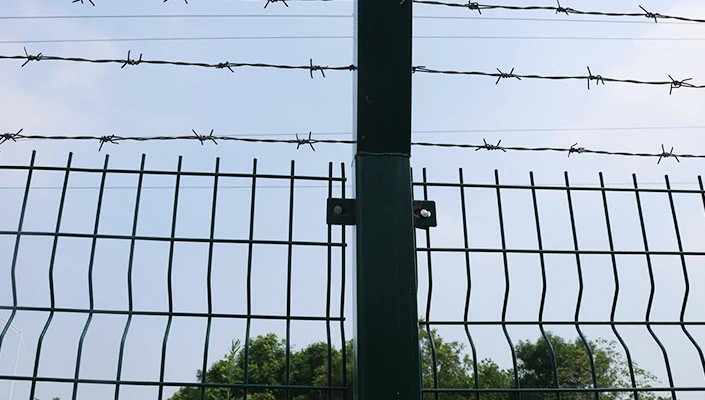Exploring the Benefits of Barbless and Barb Wire for Fencing Solutions
Understanding Barbless and Barb Wire A Closer Look
Barbed wire is often associated with confinement and security, commonly seen along property lines, in agricultural settings, and sometimes in more ominous contexts like prisons. However, not all barbed wire is created equal, and the terms barbless and barb can significantly change the implications of its use. This article aims to explore the differences between barbed and barbless wire, their applications, and the reasons someone might choose one over the other.
What Is Barbed Wire?
Barbed wire is a type of fencing wire that features sharp edges or points arranged at intervals along the strands. These barbs are usually made from metal and can cause injury. The primary function of barbed wire is to deter intruders, whether they be animals or humans, from crossing a boundary. It works effectively in agricultural settings to keep livestock in place and protect crops from wildlife while continuing to serve as an economical choice for fencing large areas.
The Case for Barbless Wire
In contrast, barbless wire does not feature any sharp protrusions. This design is primarily utilized for various reasons, particularly in environments where safety is paramount. The absence of barbs reduces the risk of injury to both humans and animals, making it a preferred choice in many scenarios, such as in residential neighborhoods or areas frequented by pets and wildlife.
Barbless wire can also be advantageous in terms of maintenance. Regular barbed wire can become tangled in vegetation, leading to potential breaches in the fence’s integrity. Barbless wire, due to its smoother design, is less prone to such complications and is easier to manage. Moreover, barbless fencing can offer more aesthetic options, blending seamlessly into gardens or natural landscapes, rather than standing out as a potential hazard.
Applications in Agriculture and Beyond
barbless barb wire

When discussing the applications of barbless and barbed wire, agriculture remains a central focus. Farmers often utilize barbed wire to manage livestock or secure crop areas. However, in cases where sensitive animals are housed—like horses or pets—the use of barbless wire becomes more practical. The softer edge of barbless wire minimizes the chance of injury, ensuring the well-being of the animals.
Furthermore, barbless wire has implications beyond agriculture. Its pedestrian-friendly design makes it an excellent choice for residential fencing and park boundaries. Neighborhoods looking to define property lines while promoting safety and accessibility may opt for barbless options. Moreover, conservation areas and wildlife reserves frequently employ barbless wire to keep out poachers while allowing animals to move without the risk of injury.
Environmental Perspectives
The choice between barbed and barbless wire can also reflect environmental considerations. Barbed wire, with its potential for harm to wildlife, can pose significant challenges in certain ecosystems. Birds and small mammals might get caught on the sharp barbs, leading to injury or death. In contrast, barbless wire presents a more wildlife-friendly option, allowing for safe passage for animals while still serving a regulatory purpose.
Moreover, barbless fencing can reduce the visual impact on natural landscapes, making it a more appealing option for developers and landowners looking to preserve the beauty of the environment while maintaining boundaries.
Conclusion
Choosing between barbed and barbless wire is a significant decision that can impact safety, aesthetics, and environmental concerns. While traditional barbed wire has its place in providing security and establishing boundaries, barbless wire shines as a safer, more versatile alternative. With its reduced risk of injury and potential aesthetic advantages, barbless wire offers a modern take on fencing that balances function and form while promoting a safer environment for both humans and wildlife. Whether in agricultural practice or urban development, understanding the distinctions and benefits of each type of wire can lead to more informed fencing choices suitable for any setting.
-
Weather Resistance of Woven Wire and Chicken Wire Fencing MaterialsNewsJun.05,2025
-
Umbrella Nails Innovations in Roofing Fasteners for Wind ResistanceNewsJun.05,2025
-
Modern Barbed Wire Fence Designs for Perimeter ProtectionNewsJun.05,2025
-
How Iron Nail Wire Enhances Nail Strength and Installation EfficiencyNewsJun.05,2025
-
High-Security Razor Fence Solutions for Perimeter ProtectionNewsJun.05,2025
-
Durable Wire Netting Fence Solutions for Animal EnclosuresNewsJun.05,2025




